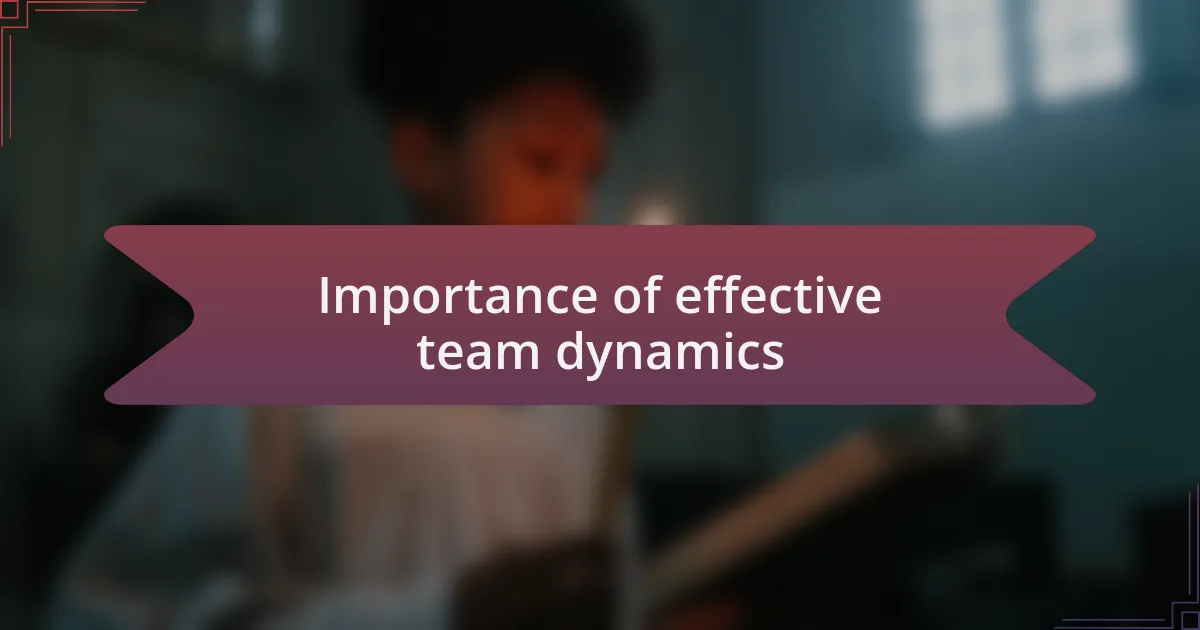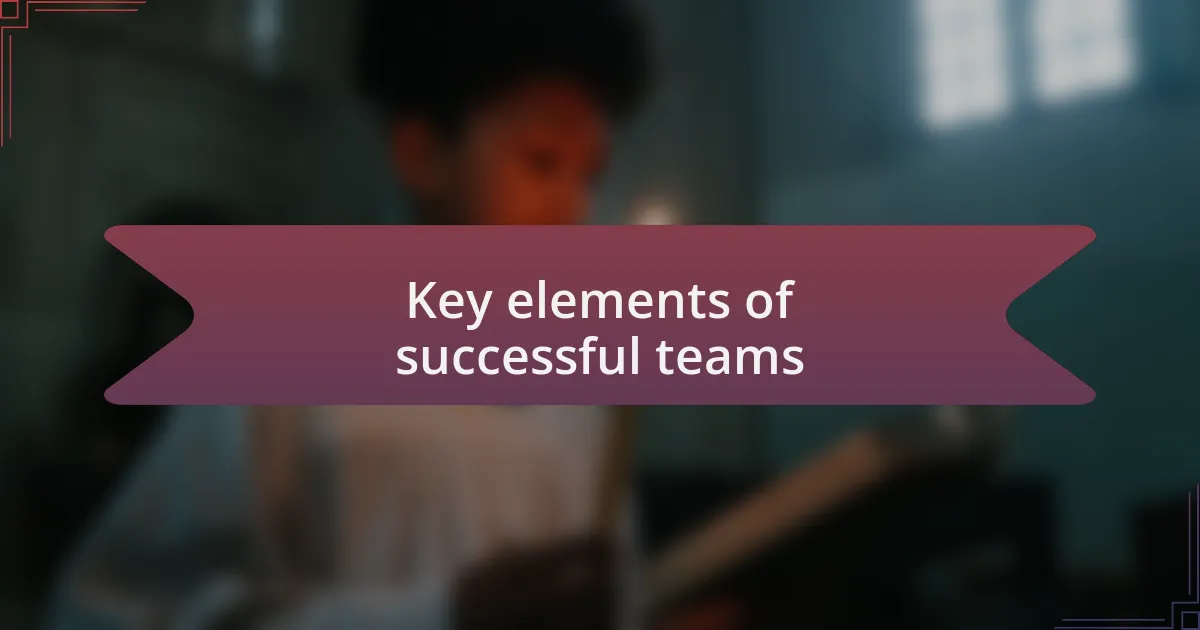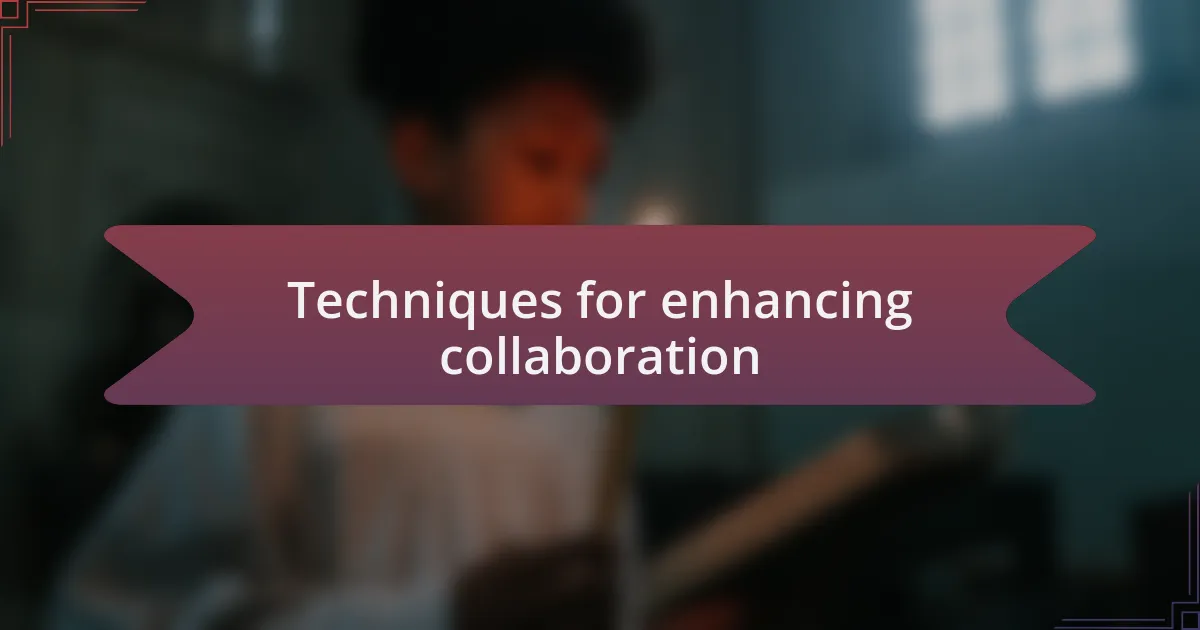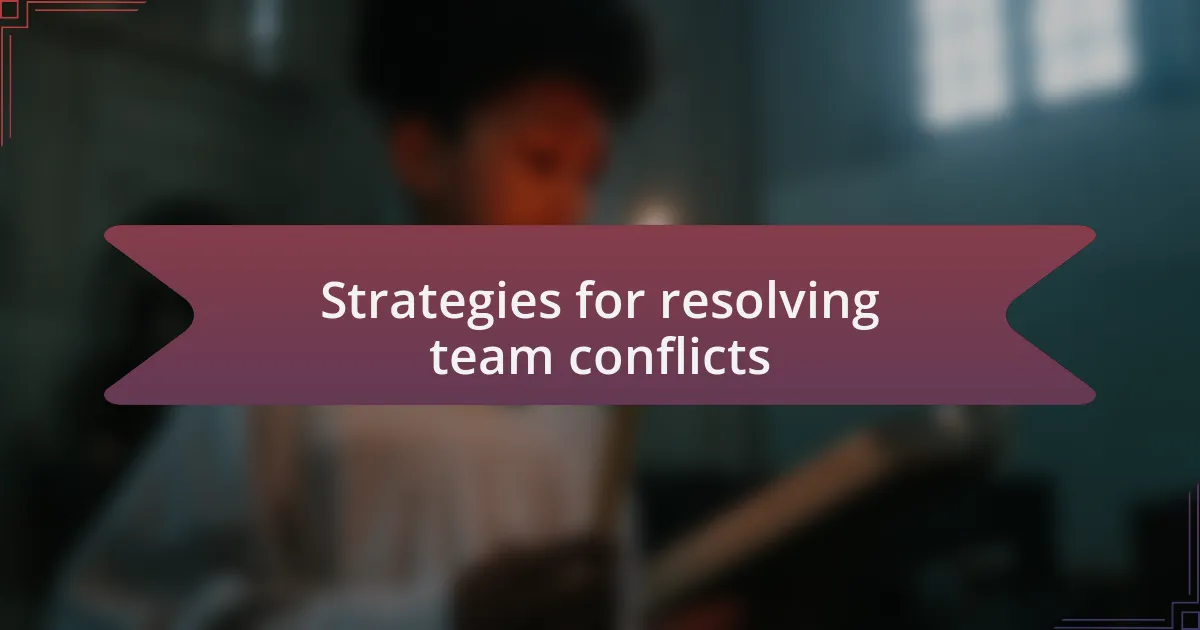Key takeaways:
- Effective team dynamics enhance collaboration, leading to improved product quality and innovation.
- Key elements of successful teams include trust, adaptability, and a shared vision, which foster motivation and unity.
- Techniques like regular check-ins, pair programming, and shared digital workspaces boost team collaboration and accountability.
- Active listening, vulnerability, and constructive feedback are vital for strengthening team dynamics and relationships.

Importance of effective team dynamics
Effective team dynamics are crucial in software development because they foster collaboration. I vividly remember a project where communication broke down, and it led to frustrating delays. Reflecting on that experience, I realized that fostering an open environment can significantly reduce misunderstandings and improve overall morale.
When team members feel comfortable expressing their ideas and concerns, innovation flourishes. Have you ever found yourself in a brainstorming session where the atmosphere was electric? I have, and it was evident that the collective energy led to creative solutions we hadn’t considered before. This dynamic not only boosts productivity but also instills a sense of ownership among team members.
Moreover, effective team dynamics directly impact the quality of the final product. I’ve seen firsthand how a cohesive team can identify potential pitfalls early, ultimately saving time and resources. Isn’t it fascinating to think that the synergy between team members can lead to outcomes that exceed individual contributions? It reinforces the idea that we, as developers, are not just working on code but are part of a larger narrative of success.

Key elements of successful teams
Trust stands as a cornerstone in successful teams. In one of my earlier projects, we faced a daunting deadline, and I noticed that the level of trust among team members was paramount. When I expressed my concerns about a proposed solution, my teammates didn’t just listen; they valued my input. That simple act of trust transformed our meetings into collaborative problem-solving sessions, ultimately leading us to deliver beyond what we thought was possible.
Another critical element is adaptability. I’ve encountered teams that thrived on change, gracefully pivoting when obstacles appeared. One time, we had to quickly shift our whole approach due to a change in client requirements. Instead of panicking, the team rallied, bringing fresh perspectives to the table. This ability to embrace change not only kept the project on track but also fostered a strong sense of unity among us, proving that flexibility is key to handling the unexpected.
Finally, having a shared vision cannot be overlooked. I recall a situation where our team crafted a clear roadmap that everyone understood. It was like we were all sailing in the same direction. When each member knows the destination, it creates a powerful motivation. How does that impact performance? For me, it was night and day—the clarity motivated us to push through challenges together, knowing we were all committed to the same goal.

Techniques for enhancing collaboration
One effective technique for enhancing collaboration is implementing regular check-ins. I’ve learned the value of these brief meetings from a project where we faced issues with misalignment on tasks. By setting aside just 15 minutes each day to update our progress and share roadblocks, we quickly turned those frustrations into collective solutions. How did this help us? Well, it fostered a culture of openness, allowing us to celebrate small victories and tackle challenges before they spiraled out of control.
Another approach that I found remarkably beneficial involves pair programming. I remember when a colleague and I decided to tackle a complex feature together. It was enlightening to see how our different coding styles complemented each other. The synergy not only improved our code quality but also strengthened our professional bond. Isn’t it fascinating how collaborating closely in real-time can lead to better outcomes and a deeper connection among team members?
Moreover, creating a shared digital workspace can significantly enhance collaboration. During one project, we adopted a collaborative tool that allowed us to visualize tasks and accomplishments in real time. I could see the entire team’s progress at a glance, which motivated me to keep contributing. How does this relate to teamwork? It emphasizes accountability and ensures that everyone feels involved, reinforcing a sense of belonging—a crucial aspect of driving success in software development projects.

Lessons learned from team interactions
One significant lesson I learned from team interactions is the importance of active listening. During a heated discussion about a project direction, I noticed how some of us were so focused on voicing our opinions that we overlooked valuable insights from quieter team members. It was a turning point when I made a conscious effort to invite those voices into the conversation. The difference was striking; their contributions not only enriched our discussions but also fostered a more inclusive environment. Have you ever thought about how many great ideas might go unheard in your team?
I’ve also discovered that vulnerability can be a powerful catalyst for growth within a team. I recall a moment when I openly shared my struggles with a particular coding issue. To my surprise, my teammates responded with empathy, sharing their own experiences and advice. This vulnerability led to a deeper trust among us and created a safe space where everyone felt comfortable expressing challenges. Don’t you think that showing our human side can strengthen team dynamics?
Furthermore, the way we handle feedback is another crucial lesson. In one project, I learned how constructive criticism can transform team relationships. Instead of merely pointing out flaws, we began framing feedback as a way to help each other grow. This shift not only improved the quality of our work but also fostered a sense of camaraderie. I often wonder: what if all teams embraced this approach to feedback? Imagine the possibilities!

Strategies for resolving team conflicts
Addressing team conflicts requires a proactive approach, and I’ve found that establishing ground rules for discussions can be a game changer. In one instance, my team agreed to a “no interruption” rule during brainstorming sessions. This simple guideline not only reduced tension but also ensured that everyone had a chance to contribute without feeling overwhelmed or overshadowed. Have you considered how setting such boundaries could transform your team’s conversations?
When conflicts arise, bringing in a neutral facilitator can often diffuse the situation. I recall a particularly challenging disagreement over a software design choice, where emotions were running high. We decided to invite a project manager to mediate our discussion. Their objective perspective allowed us to navigate the conflict constructively and reach a consensus more effectively. Isn’t it interesting how a fresh viewpoint can reshape the dynamics of a discussion?
Lastly, taking the time for team-building activities can significantly reduce friction within the group. I remember organizing a casual coding night where we collaborated on a fun side project. This informal setting allowed us to bond over our shared interests and opened lines of communication that weren’t strictly professional. It made us more resilient when conflicts did arise, as we had established trust and empathy. Don’t you find it essential for teams to invest time in building those interpersonal connections?